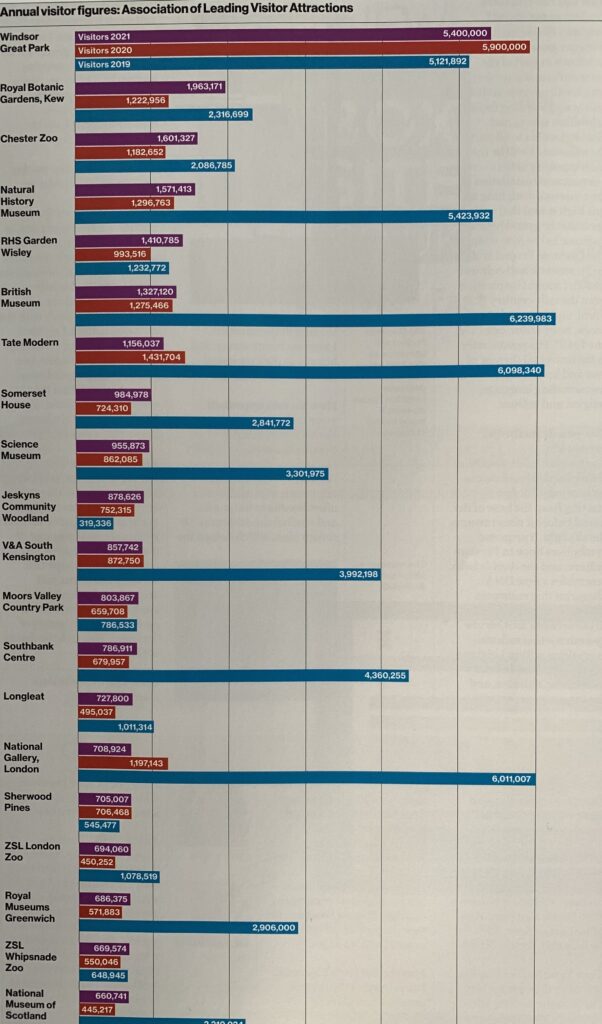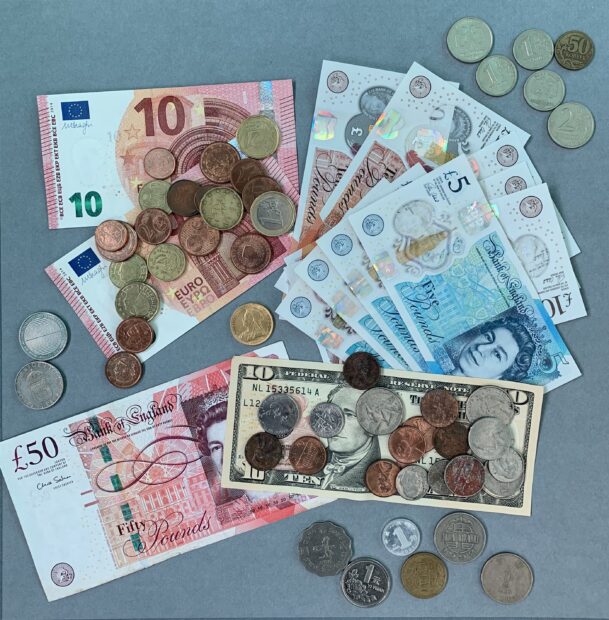After two years of upheaval due to Covid-19, the cultural heritage sector was looking forward to 2022 as the year to get back to more stability and normality. It is undeniable that for many in the sector the pandemic has severely reduced income. 2022 held the promise of making a difference to this and then along came the cost of living crisis and particularly soaring energy prices.

Annual Visitor Figures Survey 2021, Association of Leading Visitor Attractions. Museums Journal, May/June 2022. p.9
It is a scary time to be running a cultural heritage institution or to work in the sector. The future is uncertain. ‘A survey by the Association of Independent Museums (AIM) has shown that a fifth of the museums that responded are considering reducing opening hours and 40% have or plan to scale down their activities to cope with rising energy bills. A small number said they were at risk of insolvency over the crisis.’1
Some museums may have to scale back on their sustainability commitments as a means to save money, for example, ‘Portsmouth Historic Dockyard is expecting a 230% increase to its energy bills this year, jeopardising its previous plans for spending on environmental sustainability’.2 But exactly the opposite is needed. This is the time to be increasing the pace of low cost/no cost sustainability actions because they will reduce all costs not only energy costs. The Carbon Trust estimates that implementing sustainability actions could save between £400 and £1000 for every employee, and that low or no cost changes can reduce energy costs by 10%.3
Some museums have shared their successes:
- The Bishop Museum in Honolulu, Hawaii have ‘dropped our energy use by 16% in the last two years simply through retrofits for LEDs, staff training, and other energy efficiency projects’.4
- The Harris Museum and Art Gallery, Preston, UK reduced their electricity consumption by 10% in three months after the formation of a team of green champions.5
- A collections care department reduced their water usage and thereby their water bill 12%.
There are many low and no cost actions that can be taken in a museum, library, archive and gallery. Low and no cost actions can be taken to reduce the costs of energy, water, materials, equipment, digital, travel and transport across the gamut of the activities of cultural heritage institutions.
FIVE low and no cost actions to take today:
- Rearrange your workspace to take advantage of natural light.
- Audit your materials and equipment so you can use what you have before purchasing more.
- Fill the kettle for your tea break with the exact amount needed; saving energy and water.
- Print less. One page of B&W text costs approximately 7.5p for the ink alone.
- Encourage everyone to take low and no cost actions. Talk about why taking low and no cost actions are good for the museum and the planet. After years of asking staff to turn off lights with little success, one museum reported that when they explained this would help the museum to tackle rising their costs that they had instant success and lights were turned off.
Many more low and no cost actions to help you to tackle rising costs can be found in Low Cost/No Cost Tips for Sustainability in Cultural Heritage.

1. Geraldine Kendall-Adams. Energy crisis could be more of a threat than pandemic, says MA director. Museum sector bodies sound warning over soaring costs. Museums Journal. 7 October 2022. https://www.museumsassociation.org/museums-journal/news/2022/10/energy-crisis-could-be-more-of-a-threat-than-pandemic-says-ma-director/
3. https://www.carbontrust.com
4. Valentina Bianchi, The Bishop Museum in Honolulu, A hub for sustainability in the heart of the Pacific. Oct 2022. https://kiculture.medium.com/the-bishop-museum-in-honolulu-a-hub-for-sustainability-in-the-heart-of-the-pacific-an-interview-c49548111cf6
5. Museums and Art Galleries Survival Strategy. A Guide to Reducing Operating Costs and Improving Sustainability. MLA/ARUP. 2010. p.21

